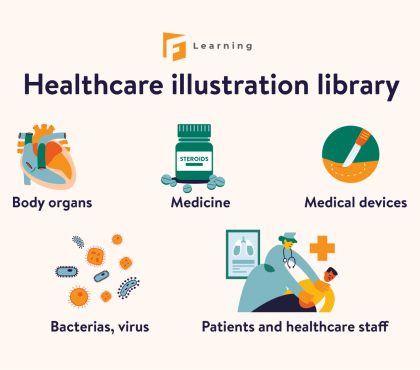In healthcare, understanding and meeting patient needs is crucial for providing effective and patient-centered care. While medical professionals excel at diagnosing and treating illnesses, there is often a deeper layer of patients’ unmet needs that may go unnoticed.
In this blog, we will explore strategies and techniques for effectively identifying patients’ unmet needs. By adopting a patient-centered mindset and utilizing the right tools, healthcare professionals can gain valuable insights into the hidden needs of their patients.
What are the needs of patients?
Patients’ needs refer to the specific requirements, desires, and expectations they have related to their healthcare and overall well-being. These needs vary widely depending on individual circumstances, medical conditions, personal preferences, and cultural backgrounds. Identifying and addressing patients’ needs is essential for providing personalized care that considers the unique challenges and goals of each individual.
Examples of patients’ needs may include
1. Physical Needs
Physical needs include medical conditions, symptoms, and functional limitations that patients may experience. Examples include:
- Pain management: Patients require effective pain control strategies to alleviate discomfort and enhance their quality of life.
- Mobility assistance: Patients with physical disabilities or injuries may require support devices or rehabilitation programs to improve mobility.
- Nutritional support: Patients with dietary restrictions, malnutrition, or specific nutritional requirements may need guidance and support to maintain optimal health.
2. Psychological Needs
The psychological needs of a patient refer to the emotional, cognitive, and social requirements that impact their mental well-being and psychological state during their healthcare journey. These needs encompass various factors, including emotional support, information, autonomy, and a sense of control, all of which contribute to the overall psychological well-being of patients.
Key Psychological Needs of Patients:
Emotional Support
Emotional support is a fundamental psychological need for patients. It involves providing empathy, understanding, and validation of their emotions and concerns. Patients require a supportive environment where they can express their fears, anxieties, and emotional distress without judgment. This support helps alleviate emotional burdens and fosters a sense of connection and trust with healthcare providers.
Information and Communication
Patients have a psychological need for accurate and comprehensive information about their medical condition, treatment options, and prognosis. Access to clear and understandable explanations empowers patients to participate in their care and make informed decisions actively.
Effective communication between healthcare providers and patients helps address uncertainties and reduces anxiety, improving patient satisfaction and engagement.
Autonomy and Control
Maintaining a sense of autonomy and control is crucial for patients’ psychological well-being. Empowering patients to actively participate in decision-making regarding their healthcare choices and treatment plans enhances their sense of control over their own lives. Involving patients in care planning and respecting their preferences and values supports their autonomy, fosters a sense of ownership, and positively impacts their psychological state.
Trust and Connection
Establishing trust and building a strong connection between patients and healthcare providers is essential. Patients must feel comfortable and confident in their healthcare team to express their concerns and collaborate effectively and openly. Trust gives patients confidence in the provided care, enhances patient satisfaction, and positively impacts their psychological well-being throughout their healthcare journey.
Emotional Coping Strategies
Patients often require psychological support to develop effective coping strategies to deal with the emotional and psychological challenges associated with their medical condition. This may involve counseling, therapy, or access to support groups.
Providing patients with the necessary tools to manage stress, anxiety, and emotional distress improves their overall psychological resilience and enhances their ability to navigate their healthcare journey successfully.
How to identify patients’ unmet needs
Besides patients’ needs, there’s also a concern for patients’ unmet needs, as they have become critical for healthcare business managers. Patients’ unmet needs examples and other important information can be found in the article below.
Recommended reading:
Identifying patients’ unmet needs for marketing roles involves understanding their preferences, desires, and challenges related to healthcare products or services. Below are some steps you can take to identify patients’ unmet needs in a marketing context:
1. Conduct market research
Use market research techniques to gather data about your target audience. This may include surveys, focus groups, or interviews with patients or potential customers. Ask questions about their healthcare experiences, needs, and what they feel is missing or lacking in existing products or services.
2. Analyze customer feedback
Review customer feedback received through various channels, such as online reviews, social media comments, or customer support interactions. Look for common themes or recurring issues that indicate patients’ unmet needs or dissatisfaction with current offerings.
3. Monitor industry trends
Stay informed about industry trends, technological advancements, and emerging healthcare needs. Keeping up with the latest developments will help you identify gaps in the market and anticipate patients’ future needs.
4. Engage with healthcare professionals
Interact with healthcare professionals, such as doctors, nurses, or pharmacists, who directly interact with patients. They can provide valuable insights into the challenges patients face, gaps in treatment options, or areas where existing products or services fall short.
5. Utilize data analytics
Leverage data analytics tools to analyze customer behavior, preferences, and purchasing patterns. This can provide valuable insights into patients’ unmet needs by identifying areas where customers are seeking alternatives or where their needs are not adequately addressed.
6. Stay connected with patient advocacy groups
Engage with patient advocacy groups or organizations representing specific patient populations. These groups can offer valuable perspectives on patients’ unmet needs within their communities and provide insights into how your products or services can better meet those needs.
7. Monitor competitor activity
Keep a close eye on your competitors and their marketing efforts. Identify any gaps or areas where they may be overlooking patient needs. This can allow you to differentiate your products or services and meet patients’ unmet needs in the market.
8. Test and iterate
Continuously refine your marketing strategies and campaigns. Collect feedback from customers and measure the effectiveness of your efforts in addressing their needs. Use this feedback to make data-driven adjustments and improvements.
Using animation in marketing campaigns for patients’ unmet needs
Animation can be a powerful tool for storytelling and capturing patients’ attention. By effectively conveying the patients’ unmet needs and demonstrating how your product or service can address them, you can create impactful marketing campaigns that resonate with patients and drive awareness and engagement.
However, creating high-quality animations requires specialized skills, resources, and time, which can be challenging for many companies. This is where outsourcing to a professional animation studio like F. Learning Studio can prove to be a smart and cost-effective choice.
F. Learning Studio has established itself as a reputable animation studio known for its expertise in producing visually stunning and compelling animations. By entrusting your animation campaign to them, you can benefit from their years of experience, skilled animators, and state-of-the-art technology.
F.Learning Studio works with Dr. Manish Chand, an influencer in the surgery field, to create a healthcare film about colorectal cancer and rectal hemorrhage. This healthcare video was utilized in the “Colorectal Awareness Month” campaign to help his patients understand their treatment options. This video generates good feedback regarding Manish’s therapy and assists him in building his own brand.
Final words
In conclusion, identifying patients’ unmet needs requires a patient-centered and collaborative approach. By actively listening, conducting comprehensive assessments, employing continuous monitoring, and leveraging technology, healthcare providers can gain a better understanding of patients’ needs and tailor interventions accordingly.
Read more:




